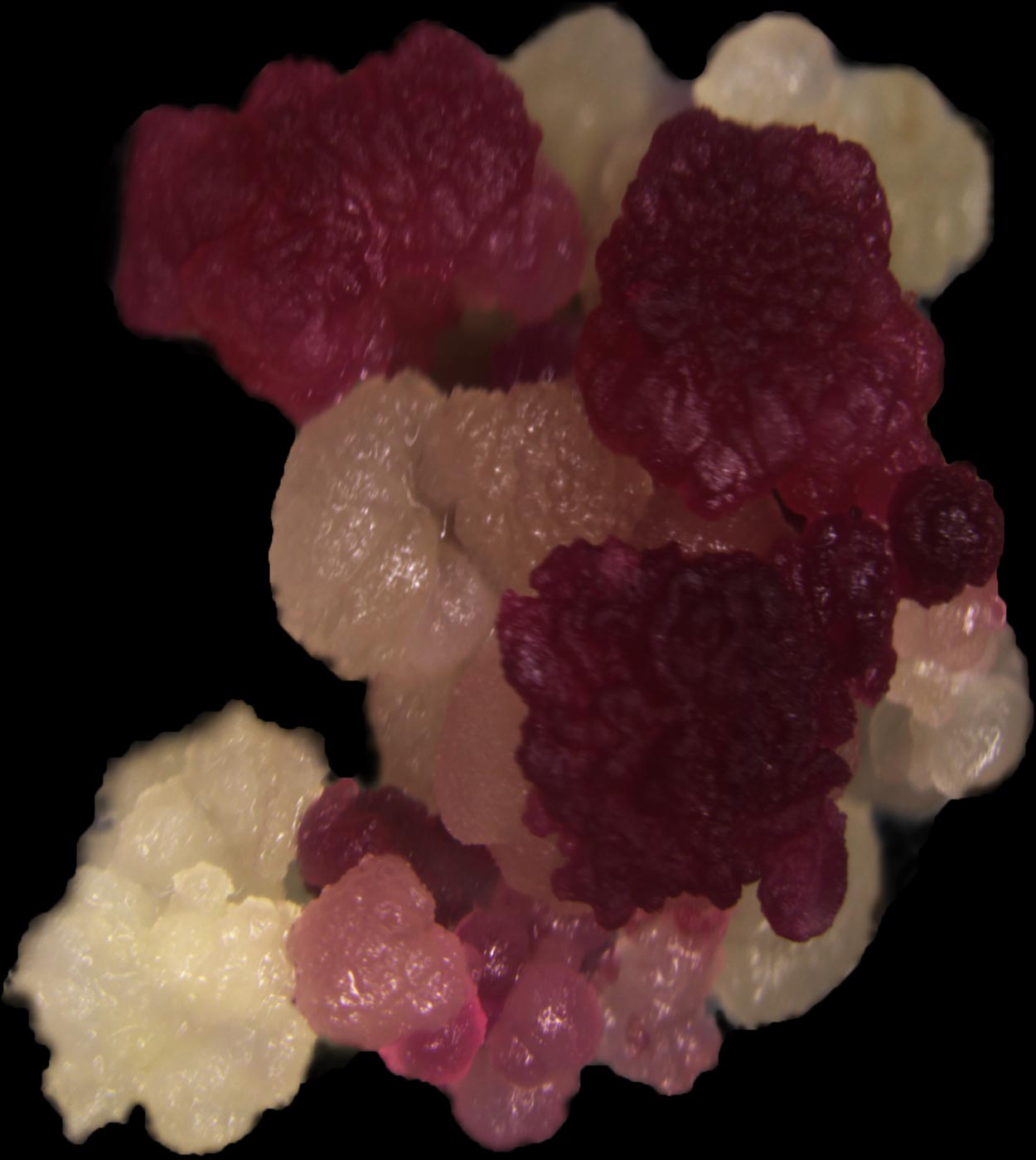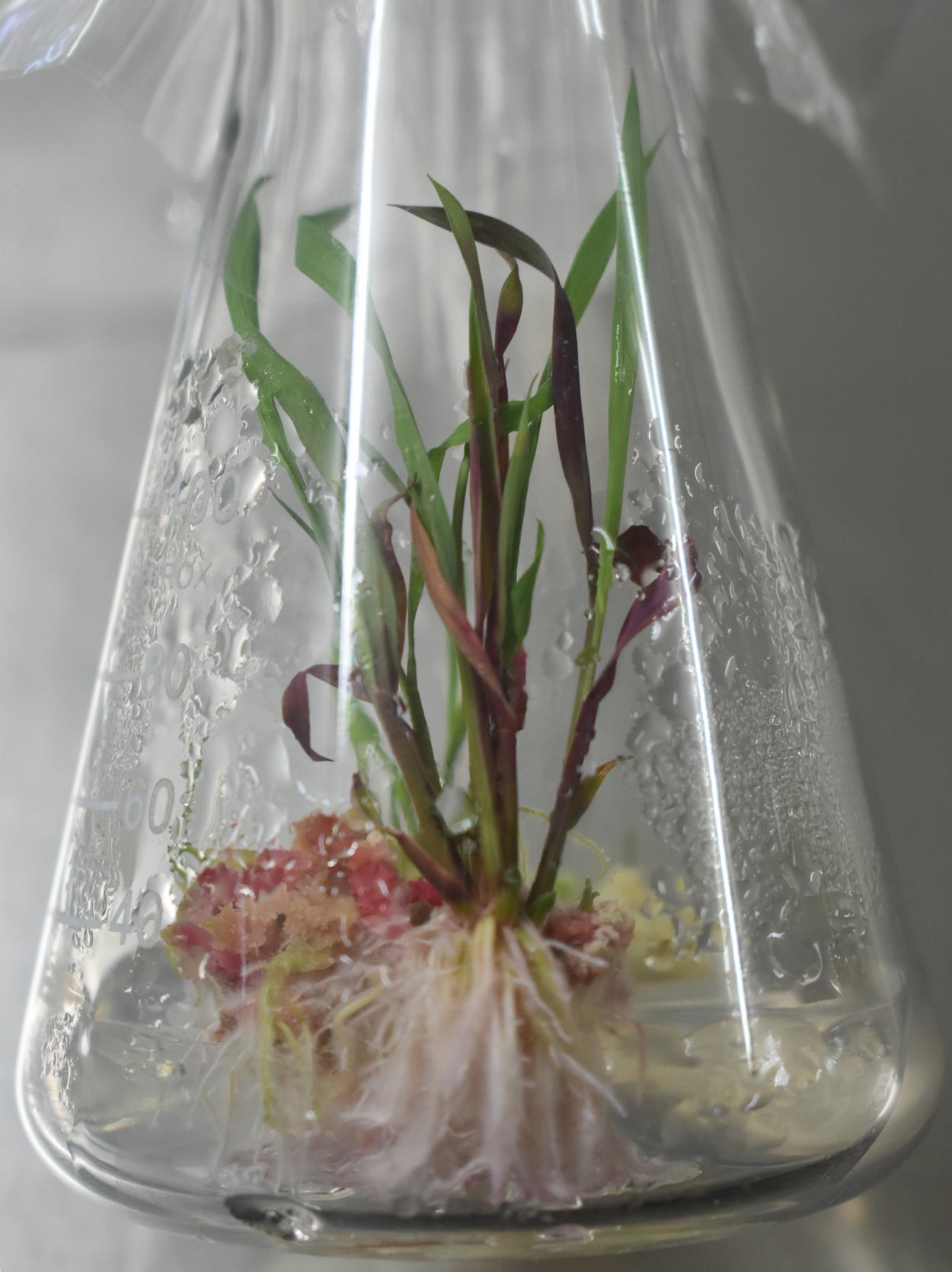Biologists Create a New Tool for Monitoring Plant Health
‘RUBY’ is a visible marker developed for monitoring impacts caused by pollutants, climate change and other forces
December 15, 2020
By Mario Aguilera

Transgenic rice calli can be easily identified based on the vivid red color from RUBY, providing a better tool for monitoring transgenic events.
Changes in the health of household lawns and gardens are evident, with browning and wilting serving as common warning signs. But other threats that result from long-term forces are less visible to the naked eye. University of California San Diego biologist Yunde Zhao and his colleagues have developed a new environmental monitoring tool to genetically signal when plants are undergoing fundamental alterations, including changes caused by pollutants and climate change.
So-called “reporters,” including a widely used green fluorescent protein that allows scientists to visualize changes in gene expression over time, have been used by plant biologists for decades. But traditional gene expression reporters often require specialized equipment, invasive treatments and expensive chemicals.
Zhao and his colleagues developed a reporter called “RUBY” that converts the amino acid tyrosine into red betalains, which are natural products causing the bright red color seen in beets, dragon fruit, Swiss chard and other plants. Details about RUBY and its applications were recently published in the Nature journal Horticulture Research.

Rice plants integrated with the plant reporter RUBY display signs of redness, reflecting the responses to the hormone known as auxin.
“RUBY is a versatile and non-invasive reporter, and the first that is suitable for large crops such as fruit trees,” said Zhao, a professor in the Division of Biological Sciences Section of Cell and Developmental Biology. Zhao oversees one of the first plant laboratories that uses CRISPR technology for tracking plant gene expression. “RUBY will be very useful for monitoring environmental changes such as heavy metal contamination and climate change.”
The next steps for the researchers include moving RUBY from the laboratory into simulated field conditions. As a visible marker for transformation at the tissue culture stage, the researchers believe RUBY also could be integrated into genomes of large plants under natural field growth conditions. Examples of the tool’s future utility include farmers seeking to monitor climate change and temperature responses in apple trees by tying RUBY into a temperature-sensitive promoter. Instead of testing individual trees, a drone could be used to survey wide swaths of crop fields, searching for RUBY’s signature red colorations.
“This won’t require you to do any treatments to the plants,” said Zhao. “If genes turn on that normally don’t turn on, then it’s a response to the environmental change. If the temperature goes up, the promoter is activated and RUBY will be expressed and you can clearly see the effects of climate change.”
This work was a collaborative effort between Zhao at UC San Diego and Professor Yubing He at the Nanjing Agricultural University. The paper’s complete author list is Yubing He, Tao Zhang, Hui Sun, Huadong Zhan and Yunde Zhao.
Funding for the research was provided by grants from the National Transgenic Science and Technology Program (2019ZX08010-003; 2019ZX08010-001).
